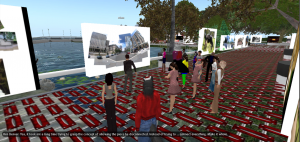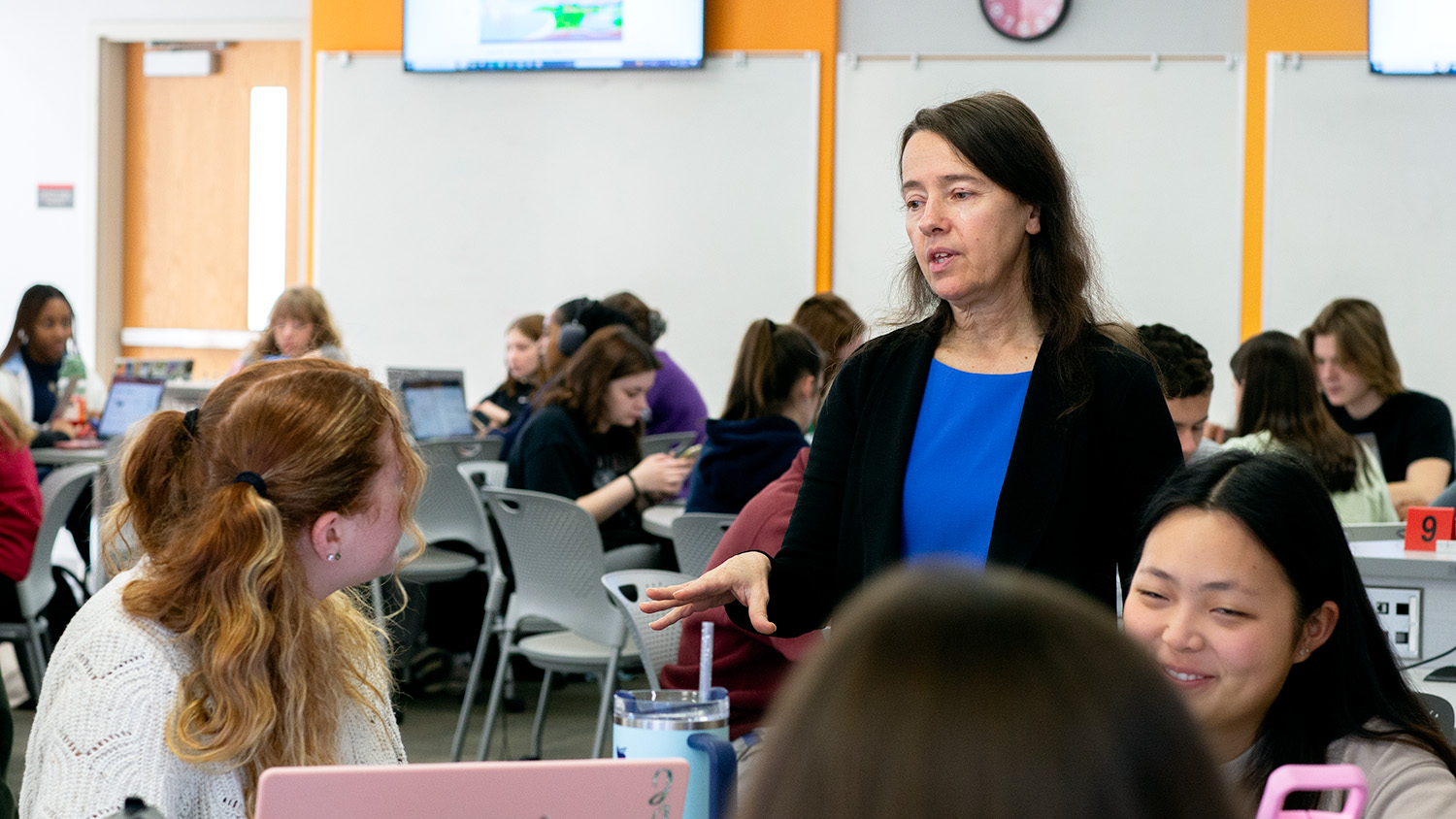First Studio-based Design Course Taught Online
In Digital Imaging, DELTA Multimedia Designer and Adjunct Assistant Professor of Art + Design Amanda Robertson, DELTA Instructional Designer Cathi Phillips, and Associate Professor of Art + Design Pat FitzGerald have been exploring ways to teach a critique-based design course in an online environment. This course covers a wide range of concepts, theories and skills through a variety of industry-standard software applications. It is a freshman course required of all majors in the Department of Art + Design, yet has attracted students of all majors, classes and disciplines across NC State. It was developed this past year to be taught fully online as the first critique-based distance education course in the College of Design.
Critique is a fundamental part of most design courses. Through critique, students learn how to design by processing the feedback received on their work and that of their colleagues, and by critically analyzing and intuitively applying this feedback as part of their approach in subsequent designs. Critique is fluid and impromptu; it is most successful when several individuals participate simultaneously. Given this, it has until recently been a challenge to effectively teach a critique-based design course fully online.

Digital Imaging employs many online technologies to facilitate the critique experience and build a collaborative online community. These technologies include Second Life, WordPress, Ning, VoiceThread, Elluminate, Moodle and YouTube. In addition, students use instructional tutorials designed specifically for this course, as well as Lynda.com videos to navigate learning the Adobe software required for the course (Adobe Photoshop, After Effects, Dreamweaver and Flash).
It is important to note that these technologies are carefully integrated to enable student learning, and to afford students a variety of ways to contribute to the course community. Ning, for example, which is similar to Facebook but allows users to create private group spaces, gives students the chance to create their own personal page that they can customize themselves. Students can then share their work in progress and receive feedback from classmates and their professors; a critical part of the design process. In Digital Imaging we use Ning as the students’ private studio space. WordPress is used as the main course website and the public side of Digital Imaging. Here, assignments are posted, final work is submitted, and a public conversation goes on about design issues around projects and in the community at large.
Creating a timeline and a structure for course delivery, including the student experience in using the various technologies, is essential for learning; especially when teaching a course online. Learning experiences build upon each other; in the depth of technical concepts as well as in design theory. Scaffolding these concepts throughout the semester is important as it also impacts, we have discovered, the students’ ability to learn and effectively apply new technologies. Just as with any course, each semester brings improvement and refinements. This will certainly be the case with the online version of Digital Imaging.
However, one take-away we’d like to share with any design faculty currently considering developing an online course: A distance education course such as Digital Imaging challenges design students (most are Freshmen in this course) to be self-sufficient. They have had to learn how to use these technologies and how to apply them in order to participate in the course. They have learned how to create their own profile page in Ning, how to publish a video to YouTube and to copy the embed code and share their video in another application. They’ve learned how to create their own posts in a blog Website (such as WordPress), to create an account in VoiceThread and record audio feedback for a critique on student works. And they’ve created an avatar in SecondLife and shared their visual solutions in an exhibit in this virtual world for everyone, everywhere to see. These students have done all this, as well as study how the principles of gestalt can empower us, as designers, to more effectively communicate our ideas, effectively applying masking techniques in Photoshop to develop visual solutions. They’ve learned how time and perspective can be explored in 2-D space, and explored how time-based media in After Effects is similar and also changes the approach to time and perspective. And they’ve studied how Kevin Lynch’s ideas about navigating a city can aid them in designing an interactive space on the Web. These students have gained confidence in their ability to learn and apply a wide range of technologies, to aid them in their own explorations in design and to facilitate collaboration, both now during their time at NC State and in the future when they enter the job force.
- Categories:


